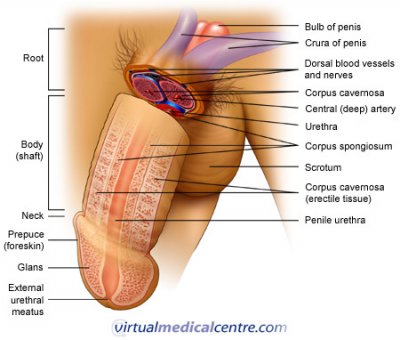Nelson Vergel
Founder, ExcelMale.com
"Approximately 80% of cases of erectile dysfunction are due solely or predominantly to organic [physical] causes." state Siroky and Azadzoi in the book Pelvic Floor Disorders [4]. The physical process of erection is largely a circulatory event, initiated and assisted by the nervous system. Simply put, adequate blood must flow into the penis, and it must be trapped there to maintain rigidity. This process is facilitated by the pelvic floor, especially the Bulbospongiosus (sometimes called Bulbocavernosus) and Ischiocavernosus muscles. "Contraction of the bulbospongiosus muscle blocks blood from escaping by pressing on the deep dorsal vein of the penis." [2]. When weak, these muscles cannot effectively inhibit this outflow, resulting in partial or total flaccidity, or ED. "It has been shown that contractions of the Ischiocavernosus (IC) and Bulbocavernosus (BC) muscles are very important in the process of penile rigidity." say Sommer et al. [5]. In another study, Colpi and colleagues report that "Our results clearly demonstrated that a reduction of contractile activity of the perineal muscles [IC and BC] may be related to erectile dysfunction." [6]. Bo et al. agree: "Weak pelvic floor muscles compromise penile erection." [7], as do Carriere and Feldt: "An increasing ability to contract and relax the pelvic floor improves sexual functioning in men with erectile dysfunction." [1]. Ballard reviews a number of studies that report similar findings [8].
http://malepelvicfloor.com/sd.html
http://malepelvicfloor.com/sd.html

















